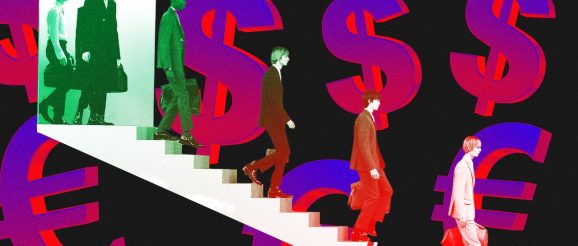How Recessions Drive Innovation in Fashion | GQ

In 1982, fashion writer John Duka outlined the way consumer habits changed during the economic recession of the early 1980s. The similarities to the current moment seem clear: unemployment hovered above 10 percent and oil prices soared, while real estate prices and retail sales plunged. Although we’ve seen an increase in retail spending in 2021 as consumers started revenge spending, we’re beginning to see retail sales drop. When retail spending slows down, it has a serious knock-on effect: companies can’t afford to produce, distribute, and employ workers. Those workers, in turn, wind up with less money in their pockets—and, to put a 2022 spin on it, wind up having to decide between paying rent or copping a new JJJJound drop.
So what about this recession?
First, we have to look at the trends leading up to now. You could lump the Covid recession and the theoretically approaching 2022 recession into one long stretch. During this three-year pandemic period, our values as consumers have changed. Fashion designers that have recognized customers’ interest in sustainability and engagement with social political issues—and managed to render them into tangible products and narratives—have found success.
“What’s interesting now is that designers have to square offering newness with sustainability, so they need to present narratives around mixing and matching, like ‘buy this new piece, but wear it with this thing you got from last season or two seasons ago,’ said Rees. “Or they look into their archive and create pieces with deadstock fabric, that type of thing. There needs to be a strong circular and sustainability narrative, combined with newness.”
One differentiator of this recession is the rise of new ways to shop. On top of that, designers will need to compete with platforms that can appeal to these customer values at scale. The growing clothing resale app, Depop, made over $70 million in revenue in 2020, and is changing the ways we can browse cheaper alternatives while learning what’s trending in fashion. Platforms like Depop also compete with brands when a large-scale release happens. Depop reported a 62.7% increase in searches for “Yeezy” between mid-July 2021 and the first week of August 2021, timed with the Yeezy, Gap collaboration launch, suggesting that consumers care less about fresh-from-the-box drops and are willing to search for cheaper secondhand alternatives.
“Thredup reports that the resale market will grow 127% by 2026, driven by inflation, sustainability concerns and generational shopping shifts. It’s essential that brands, no matter the market or price point, invent in a resale ecosystem, because it’s only becoming more normalized and more mainstream,” said Rees.
So: the brands that will thrive in a possible coming recession will likely be ones that manage to balance their customers’ long-held desire for novelty with their newer interest in of-the-moment techniques and beliefs. The newly relaunched J.Crew, under the direction of Brendon Babenzien, seems like it might fit the bill: Babenzien, long interested in merging nostalgia with contemporary environmental and social concerns, seems to be designing new-feeling pieces with a nod to the vintage-minded look consumers are hungry for.
Babenzien, of course, cut his teeth at Supreme, which is undergoing its own reinvention. Newly installed creative director Tremaine Emory knows how to nail maximalism—and is a designer deeply in tune with the political and social climate. While Gucci buyers will still buy Gucci, mid-luxury brands who are value driven are prime candidates to drive fashion into new realms.
As in the 1980s and aughts, it seems safe to assume that the economy of the near future will shape its fashion. Like the late avant-garde fashion designer Issey Miyake said, “Design stems from reflecting on and challenging the times we live in.”
